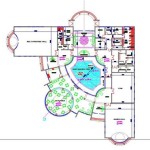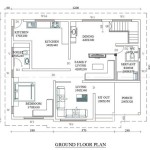Finding Small Indoor Plants Near Me: A Guide to Greenery in Your Space
The incorporation of indoor plants into living and working environments has gained significant traction due to their aesthetic appeal and potential benefits for well-being. Small indoor plants, in particular, offer a convenient and manageable way to introduce nature into confined spaces. The accessibility of these plants through local retailers is a crucial factor for many individuals seeking to enhance their surroundings. Understanding how to locate these plants and what factors to consider is essential for a successful indoor gardening endeavor.
The phrase "Small Indoor Plants Near Me" represents a common search query reflecting the desire for immediate access to locally available options. This article aims to provide a comprehensive guide for individuals seeking to find and select appropriate small indoor plants within their geographic vicinity.
Key Points to Consider When Searching for Small Indoor Plants
Before initiating the search for "Small Indoor Plants Near Me," it is beneficial to understand the key factors that will influence the selection process. These factors encompass environmental conditions, personal preferences, and the intended purpose of the plants.
1. Assessing Your Environment: Light, Humidity, and Temperature
The success of any indoor plant relies heavily on its environmental compatibility. Light levels, humidity, and temperature are critical factors that must be evaluated before acquiring any plant. Different plant species have varying requirements, and selecting plants that align with the existing conditions is paramount for their survival and flourishing.
Light: Natural light availability is often the most limiting factor in indoor environments. Consider the orientation of windows and the intensity of sunlight received throughout the day. South-facing windows typically provide the most light, while north-facing windows offer the least. The terms "bright indirect light," "low light," and "direct sunlight" are commonly used to describe light requirements for plants. Research the specific light needs of potential plants to ensure they will thrive in the chosen location. If natural light is insufficient, supplemental grow lights may be necessary.
Humidity: Many indoor environments, especially during winter months, tend to be dry. Plants that originate from tropical regions often require higher humidity levels. Methods to increase humidity include using humidifiers, grouping plants together, or placing plants on trays filled with pebbles and water. Consider plants known for tolerating lower humidity if maintaining high humidity is impractical.
Temperature: Most indoor plants thrive in temperatures between 65°F and 75°F (18°C and 24°C). Avoid placing plants near drafts from windows or heating/cooling vents, as extreme temperature fluctuations can be detrimental. Sudden temperature changes can shock plants, leading to leaf drop or stunted growth.
2. Identifying Available Resources: Local Nurseries, Garden Centers, and Online Retailers
The search for "Small Indoor Plants Near Me" will typically lead to a variety of potential sources. Local nurseries and garden centers offer the advantage of in-person evaluation and expert advice. Online retailers provide a broader selection and convenience, but require careful consideration of shipping logistics and plant health guarantees.
Local Nurseries: Visiting local nurseries allows for direct interaction with plant experts who can provide guidance on plant selection and care. Nurseries often offer a wider variety of plant sizes and species compared to general retailers. The opportunity to physically inspect the plants before purchase ensures that you are selecting healthy specimens. Furthermore, local nurseries often stock plants acclimated to the local climate, increasing their chances of successful adaptation to your indoor environment.
Garden Centers: Garden centers, often found within larger retail stores, typically offer a selection of indoor plants alongside gardening supplies. While the plant selection may be more limited than at a dedicated nursery, garden centers can provide a convenient option for purchasing common indoor plants. Be sure to inspect the plants carefully for signs of pests or diseases, as the care provided at these locations can be variable.
Online Retailers: Online retailers offer an extensive selection of small indoor plants, including rare and unusual varieties. However, purchasing plants online requires careful consideration of shipping conditions and plant health guarantees. Reputable online retailers typically package plants carefully to minimize damage during transit and offer refunds or replacements for plants that arrive in poor condition. Read reviews and research the retailer's policies before making a purchase. Consider the shipping time and the potential impact on plant health, especially during extreme weather conditions.
3. Matching Plant Characteristics to Personal Preferences and Intended Use
Selecting the right small indoor plants involves considering personal preferences, such as leaf texture, color, and growth habit. The intended use of the plants, whether for decorative purposes, air purification, or as a hobby, will also influence the selection process.
Aesthetic Preferences: The visual appeal of indoor plants is a primary consideration for many individuals. Plants offer a wide spectrum of colors, textures, and shapes, allowing for customization to suit individual tastes and décor styles. Consider the overall aesthetic of your space and select plants that complement the existing design. For example, plants with bold foliage patterns can add visual interest, while plants with delicate foliage can create a calming atmosphere.
Air Purification: Certain indoor plants have been shown to contribute to air purification by removing volatile organic compounds (VOCs) from the air. While the degree of air purification achieved by a few plants in a room is debated, the potential benefits are a factor for some individuals. Plants commonly cited for their air-purifying qualities include snake plants ( *Sansevieria trifasciata*), spider plants (*Chlorophytum comosum*), and peace lilies (*Spathiphyllum wallisii*). However, the effectiveness of air purification depends on factors such as the size of the room and the number of plants.
Maintenance Requirements: Consider the level of care you are willing to provide. Some plants are more demanding than others, requiring frequent watering, fertilization, and pruning. Plants such as succulents and cacti are generally low-maintenance, while others, like orchids and ferns, require more attentive care. Research the specific care requirements of each plant before making a purchase to ensure that you can provide the necessary attention.
Safety Considerations: If you have pets or small children, it is essential to consider the potential toxicity of indoor plants. Some plants can be harmful if ingested. Research the toxicity of potential plants before bringing them into your home. Common toxic plants include lilies, dieffenbachia, and oleander. Keep toxic plants out of reach of children and pets, or choose non-toxic alternatives.
Specific Plant Recommendations: Several small indoor plants are particularly well-suited for beginners and various environments. *
Snake Plant (Sansevieria trifasciata):
Tolerates low light and infrequent watering. *ZZ Plant (Zamioculcas zamiifolia):
Extremely drought-tolerant and adaptable to low light conditions. *Pothos (Epipremnum aureum):
Easy to propagate and grows well in a variety of light conditions (avoid direct sunlight). *Spider Plant (Chlorophytum comosum):
Produces "spiderettes" that can be easily propagated. *Succulents (Various species):
Require bright light and well-draining soil; water sparingly.Utilizing online search engines and mapping applications with the query "Small Indoor Plants Near Me" will generate a list of potential retailers in your vicinity. Filter the results based on customer reviews and proximity. Calling the retailers directly to inquire about their current stock and expertise can further refine your search.
Once you have identified potential sources, visit the locations to assess the plant selection and quality. Examine the plants carefully for signs of pests, diseases, or nutrient deficiencies. Check the soil moisture and drainage to ensure that the plants are being properly cared for. Ask the staff for advice on plant selection and care, and be sure to inquire about their return policies.
When selecting small indoor plants, consider purchasing plants in appropriately sized pots. Repotting can be stressful for plants, so it is best to choose plants that are already in suitable containers. Ensure that the pots have drainage holes to prevent waterlogging and root rot. Using a well-draining potting mix is also essential for healthy plant growth.
Finally, consider the long-term care requirements of your chosen plants. Develop a regular watering schedule, fertilize as needed, and prune regularly to maintain their shape and health. Monitor your plants for signs of pests or diseases, and take appropriate action to address any problems promptly. With proper care and attention, your small indoor plants will thrive and bring beauty and tranquility to your living or working space.
The search for "Small Indoor Plants Near Me" is the initial step in a rewarding journey of indoor gardening, requiring thoughtful consideration of environmental factors, resource availability and personal preferences to cultivate a vibrant and thriving indoor ecosystem.

House Plants At Com

9 Easy Indoor Vine Plants The Home Depot

12 Best Indoor Plants For Health According To Experts

24 Best Indoor Plants Find Your Perfect Houseplant Garden Design

Best Indoor Plants For Your Home Or Office The Depot

24 Best Indoor Plants Find Your Perfect Houseplant Garden Design

Zz Plant Zamioculcas Zamiifolia

24 Best Indoor Plants Find Your Perfect Houseplant Garden Design

Best Indoor Plants For Your Home Or Office The Depot

15 Non Toxic Houseplants That Are Safe For Kids Pets Ted Lare Design Build
Related Posts








